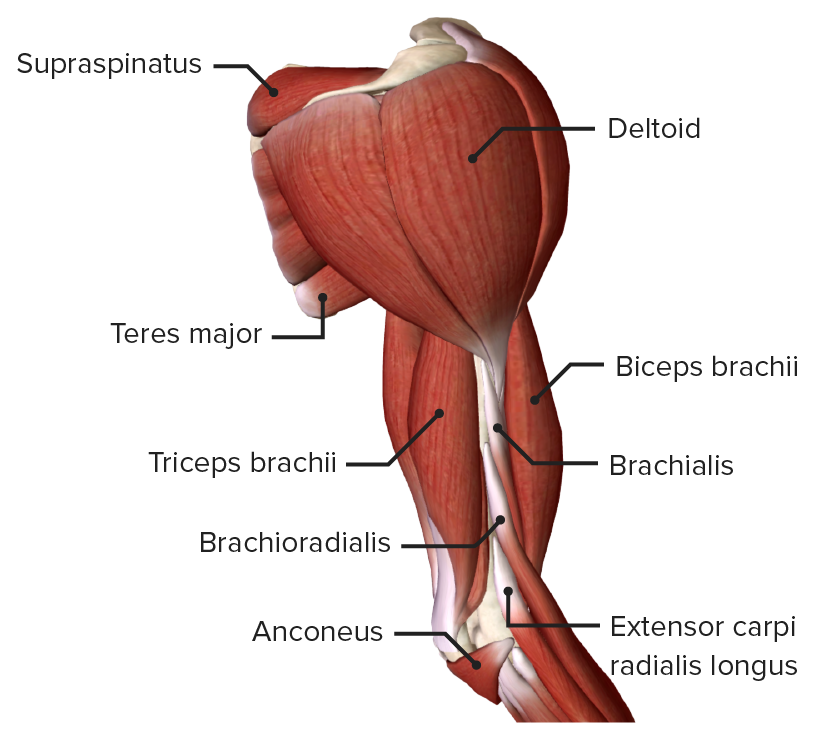Playlist
Show Playlist
Hide Playlist
Neurovasculature Relations – Anatomy of the Arm
-
Slides 05 UpperLimbAnatomy Pickering.pdf
-
Download Lecture Overview
00:00 We can also in relation to the radial groove see the origin of the medial and lateral heads of triceps. 00:02 Neurovascular relations are important on this posterior compartment. I'll talk about the ones that are passing up to through scapula in more detail when we look at the blood supply to the upper limb. But really I just want to focus in, these muscles apart these blood vessels and nerves which are passing out of the triangular interval. We can see it here. 00:25 Reminding ourselves that the triangular interval is formed medially by the long head of triceps, superiorly by the teres major muscle and laterally by the humerus. We can see these nerves and these blood vessels are leaving the axilla and passing to the posterior compartment. 00:46 We can see up here, we have the axillary artery and that is eventually becoming the brachial artery and coming from the brachial artery we can see just here, we have the profunda brachii artery. Here we can pick up the profunda brachii artery running in between the medial and lateral heads of triceps. It is accompanied by if here remember the posterior coat the radial nerve following the profunda brachii artery. And we can see the radial nerve now passing down to this posterior compartment. So remember the brachial artery as the axillary artery where in the axilla and the posterior cord was in the axilla. And to pass out from the axilla to the posterior compartment these structures had to pass through one of those spaces. 01:39 Here they have passed through the triangular interval. So separates the long and lateral heads of triceps we have got the radial nerve and the profunda brachii artery. They passed to the posterior compartment via the triangular interval. Radial nerve from the posterior cord, the profunda brachii from the brachial artery. So in this lecture we have looked to the brachial fascia and the intermuscular septae that separate the arm into compartments. 02:11 We can visualize that with the arm in cross section. We then looked to the anterior compartment of the arm, biceps brachii, brachialis, and coracobrachialis. We looked at the function and then neurovascular relations. We looked to the cubital fossa, its boundaries and contents and then we looked into the posterior compartment specifically triceps brachii, its function and the important neurovascular relations.
About the Lecture
The lecture Neurovasculature Relations – Anatomy of the Arm by James Pickering, PhD is from the course Upper Limb Anatomy [Archive].
Included Quiz Questions
Which nerve innervates the muscles of the anterior and flexor compartment of the arm?
- Musculocutaneous
- Median
- Radial
- Ulnar
- Axillary
Which statement concerning the triceps brachii is correct?
- It is innervated by the radial nerve.
- Its long head originates from the supraglenoid tubercle of the scapula.
- It attaches to the radial tuberosity of the radius.
- It is involved in supination of the forearm.
- It can flex the forearm at the elbow joint.
Customer reviews
5,0 of 5 stars
| 5 Stars |
|
5 |
| 4 Stars |
|
0 |
| 3 Stars |
|
0 |
| 2 Stars |
|
0 |
| 1 Star |
|
0 |




